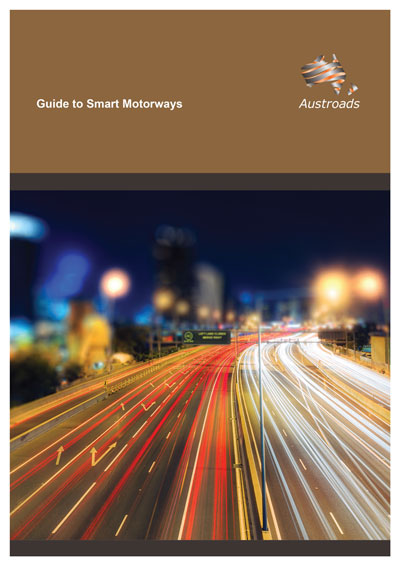Traffic Management

- Publication no: AGSM-16
- ISBN: 978-1-925451-50-4
- Published: 14 December 2016
- Edition: 1
- PDF (free) Download
- View online View guide
This Guide provides practitioners with a definite, standardised set of smart motorway information within a single reference document to support the delivery of safe and efficient smart motorways. It primarily comprises guidance on the selection, design and layout of ITS elements within a smart motorway project.
‘Smart motorways’ (also referred to as managed motorways) is the term used to describe motorways that have information, communications and control systems incorporated in and alongside the road. These technology-based systems are deployed to actively manage traffic flows and improve road capacity and safety, as well as deliver other important outcomes for road users such as better travel reliability and real-time traveller information.
Smart motorways comprise an integrated package of intelligent transport systems (ITS) interventions. This includes coordinated ramp signalling, speed and lane use management, traveller information (using variable message signs) and network intelligence (such as from vehicle detection equipment).
The Guide to Smart Motorways promotes operations-led design, recognising that effective operations are critical to achieving successful outcomes and that operational needs must be considered right from the start of the project.
-
-
-
-
-
-
- 10.4.1 Sign Face Layout
- 10.4.2 Legibility Distance Requirements
- 10.4.3 Sign Size
- 10.4.4 Geometrical Considerations
- 10.4.5 Longitudinal Placement and Co-location
- 10.4.6 Mounting Arrangements
- 10.4.7 Sign Orientation
- 10.4.8 Horizontal and Vertical Clearances
- 10.4.9 Maintenance Access
- 10.4.10 Supporting Traffic Management Devices
-
-
- 11.4.1 Dynamic Activation and Deactivation
- 11.4.2 Scheduled Start-up and Close-down
- 11.4.3 Operation During Incidents and Events
- 11.4.4 Manual Operation
- 11.4.5 Start-up and Close-down Control Sequences
- 11.4.6 Average Cycle Times
- 11.4.7 Minimum Red, Green and Yellow Times
- 11.4.8 Vehicle Release at the Stop Line
- 11.4.9 Ramp Signals Response to a Lane Closure
- 11.4.10 Ramp Signals Response to Changing Speed Limits
- 11.4.11 Ramp Signals Response to a Motorway Closure
- 11.4.12 Emergency Vehicle Access when Ramp Signals Are Operating
-
- 11.5.1 Design Traffic Flows
- 11.5.2 Number of Metered Lanes at the Stop Line
- 11.5.3 Entry Ramp Queue Storage Requirements
- 11.5.4 Entry Ramp Lane Configuration
- 11.5.5 Stop Line Position Relative to the Nose
- 11.5.6 Acceleration and Merging Configuration
- 11.5.7 Traffic Management Devices
- 11.5.8 Priority Access Lanes
- 11.5.9 Motorway-to-motorway Ramps
- 11.5.10 Designing for Future Retrofitting of Ramp Signals
-
-
- 12.4.1 Sign Face Layout
- 12.4.2 Legibility Distance Requirements
- 12.4.3 Sign Size
- 12.4.4 Geometrical Considerations
- 12.4.5 Longitudinal Placement and Co-location
- 12.4.6 Mounting Arrangements
- 12.4.7 Sign Orientation
- 12.4.8 Horizontal and Vertical Clearances
- 12.4.9 Maintenance Access
- 12.4.10 Enforcement Devices
- 12.4.11 Supporting Static Signing
- 12.4.12 Other Supporting Traffic Management Devices
-
-
-
Tables
-
Figures
